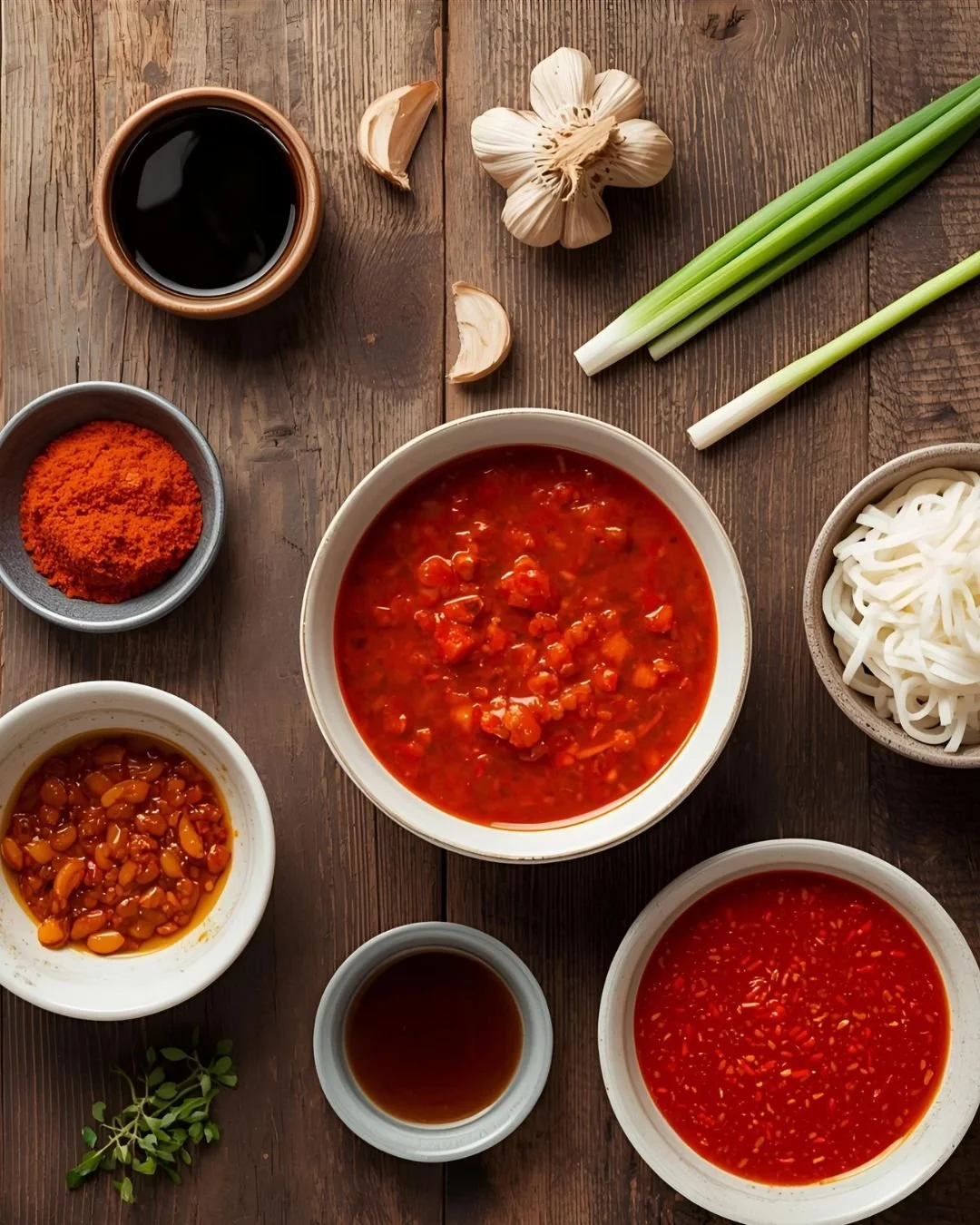🇰🇷 Top 20 Korean Pantry Essentials
(What I Actually Keep at Home)
Korean cooking is easier once your pantry is stocked. You don’t need much. Just a few sauces, spices, and the basics that show up in most dishes. Once you have these, everything feels more familiar and you stop reaching for substitutions that never taste quite right. This is what I keep at home.
Top 20 Korean Pantry Essentials
1. Gochujang (Korean Chili Paste)
Brand I use: O’Food
The base of so many Korean dishes. Sauces, stir-fries, bibimbap, tteokbokki. If you have gochujang, you are basically ready to cook Korean food.
2. Gochugaru (Korean Chili Flakes)
Brand I use: Taekyung
This is the flavor of Korean food. Bright, smoky, and warm. It belongs in kimchi, soups, vegetables, marinades. Do not replace it with crushed red pepper.
3. Soy Sauce
Preferred: Sempio
Backup: Kikkoman
Korean soy sauce has its own depth and works better in Korean dishes. I still buy Kikkoman when it’s easier to find but Sempio is ideal.
4. Soup Soy Sauce
Brand: Sempio
The secret behind so many Korean soups. Lighter and saltier than regular soy sauce. A little goes a long way.
5. Sesame Oil
Brand: Kadoya
Toasted sesame oil finishes almost every Korean dish. Without it, things taste flat.
6. Sesame Seeds
Brand: Wang - They look like garnish but they pull everything together. I use them on rice, noodles, vegetables, eggs, salads.
7. Rice Vinegar
Brand: Manukan - For marinades, salads, and bibim-style dishes. Adds brightness without being harsh.
8. Oyster Sauce
Brand: Lee Kum Kee - Not traditionally Korean but common in home cooking. Good for quick vegetable dishes and stir-fries.
9. Fish Sauce
Brand: Wangshin - Optional but useful. It gives broths and fried rice a stronger base. I use it when I want a little more punch.
10. Curry Blocks
Brand: S&B - Soft, mild comfort food. Great for quick dinners.
11. Ramyun
Brands: Shin, Jin
A Korean pantry staple. Bigger flavor, bouncier noodles, cleaner heat. Good to have around.
12. Sweet Potato Noodles
Brand: O’Food - For japchae or quick noodle meals. They last forever and soak up flavor well.
13. Korean Rice Cakes
Shelf-stable tteok - makes it easy to cook tteokbokki at home. Also good in soups.
14. Rice Paper
Brand: Cathay - Not Korean but I use it often. Good for leftovers, quick rolls, and lazy meals.
15. Kimchi
Brands: Jongga or Mother in Law’s Kimchi
The fridge staple. I eat it with rice, noodles, eggs, soups, everything.
16. Doenjang
Brand: CJ Haechandle - Fermented soybean paste with deep flavor. Base for soups, stews, and sauces.
17. Ssamjang
Brand: O’Food - The classic dipping sauce for Korean BBQ but also great with vegetables and anything fried.
18. Garlic
Korean cooking uses a lot of garlic. Minced or sliced, it is in almost everything.
19. Green Onions
Fresh, bright, and important. I keep them standing in a glass of water in the fridge.
20. Spam or Canned Tuna
Comfort food staples. Spam fried rice. Tuna (Dongwon) kimchi stew. Easy and familiar.
Where to Buy Korean Ingredients
Korean Markets
H Mart, Zion, and Assi will have everything. Best for produce and fresh cuts.
Local Asian Markets
Vietnamese, Chinese, and Japanese stores usually carry the basics.
Amazon
This is where I buy pantry items when I don’t want to drive. I’ll include the brands I use.
Amazon Pantry Grid
Kimchi (when available)
If you’re starting your Korean pantry from scratch, begin with five essentials:
gochujang, gochugaru, soy sauce, sesame oil and sweet potato noodles.
Once you have these, most recipes become much easier.
You might also like..
-
Start with gochujang, gochugaru, soy sauce, sesame oil and sweet potato noodles. These five ingredients cover most beginner recipes.
-
If you can find Korean brands, they taste better in Korean cooking. But you can still use your regular soy sauce, rice vinegar or sesame oil until you stock up.
-
Yes. Almost everything in this guide is available online or at a standard grocery store. I listed the brands that give you the best flavor.
-
Gochujang is a chili paste. Gochugaru is chili flakes. They are used for different purposes, and one cannot replace the other.
Cooking more Korean food at home? I’m working on more simple recipes and pantry-friendly ideas. You can also join my newsletter if you want weekly slow travel, reading, and kitchen notes.

